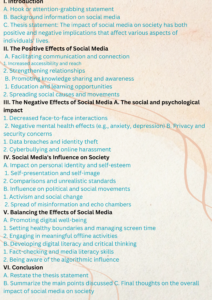Writing a perfect academic essay requires careful planning, research, and attention to detail. It is essential to follow a structured approach and adhere to the guidelines provided by your instructor or academic institution. By following the steps outlined in this guide, you will be able to create a well-crafted essay that showcases your knowledge and analytical skills.
What Is an Academic Essay?
An academic essay is a formal piece of writing that presents a well-structured argument or analysis on a specific topic. It assesses a student’s understanding, research skills, and ability to communicate effectively. The essay includes an introduction with a thesis statement, body paragraphs with supporting evidence, and a conclusion that summarizes the main points. Academic essays require a formal tone, logical structure, and proper citations. They demonstrate critical thinking, engagement with relevant literature, and the ability to draw well-supported conclusions. Academic essays are important for showcasing knowledge, analytical skills, and contributing to scholarly discourse.
Read more on Informative Essay Topics for All Students
Types of Academic Essays
There are several types of academic essays that students encounter in their educational journey. Each type serves a distinct purpose and requires specific approaches to writing. Here are some common types of academic essays:
- Expository Essay: This type of essay aims to explain or describe a concept, idea, or process in a clear and objective manner. It presents information, facts, and evidence to inform the reader about a particular topic.
- Argumentative Essay: In an argumentative essay, the writer presents a specific claim or viewpoint on a controversial issue and provides evidence and reasoning to support it. The goal is to persuade the reader to accept the writer’s perspective.
- Persuasive Essay: Similar to an argumentative essay, a persuasive essay seeks to convince the reader to adopt the writer’s position on a particular topic. It employs emotional appeals, logical arguments, and rhetorical devices to sway the reader’s opinion.
- Descriptive Essay: A descriptive essay vividly portrays a person, place, object, or event using sensory details. It aims to create a vivid and engaging picture in the reader’s mind.
- Narrative Essay: A narrative essay tells a story or recounts a personal experience. It often includes elements such as characters, setting, plot, and dialogue to engage the reader.
- Compare and Contrast Essay: This type of essay explores the similarities and differences between two or more subjects. It examines their characteristics, qualities, and relationships to provide insights into the topics being compared.
- Cause and Effect Essay: A cause and effect essay analyzes the causes and consequences of a particular event, phenomenon, or situation. It explores the reasons behind an occurrence and the outcomes that result from it.
- Analytical Essay: An analytical essay involves a thorough examination and interpretation of a text, idea, or piece of literature. It requires breaking down the subject into its constituent parts, analyzing its components, and presenting an evaluation or critique.
- Research Essay: A research essay involves conducting extensive research on a specific topic and presenting a well-supported argument or analysis based on scholarly sources. It requires proper citation and referencing of the researched materials.
These are just a few examples of the types of academic essays students may encounter. Each type has its own requirements in terms of structure, approach, and style. Understanding the purpose and expectations of each essay type is crucial for producing effective and well-crafted academic writing.
Academic Essay Sample
There various different essays below it is a sample of an academic essay:
1. Influence of Social Media On Music Artist Management- Argumentative Essay
2. Graph organizer s1 12.01.21
Academic Essay Process
Understand the Essay Prompt
The first step in writing a perfect academic essay is to thoroughly understand the essay prompt. Read the prompt carefully and identify the key requirements and instructions. Pay attention to the topic, word count, formatting guidelines, and any specific research or citation requirements. Clear understanding of the prompt will help you stay focused and ensure that your essay addresses the given topic effectively.
Conduct Thorough Research
Once you have a clear understanding of the essay prompt, conduct thorough research on the topic. Gather relevant information from reliable sources such as academic journals, books, reputable websites, and scholarly databases. Take detailed notes and organize the information based on its relevance to your essay. Ensure that you cite all your sources properly to avoid plagiarism.
Develop a Strong Thesis Statement
A strong thesis statement is the foundation of a well-written academic essay. It presents the main argument or idea that your essay will explore and support. Your thesis statement should be clear, concise, and specific. It should also be arguable and provide a roadmap for the rest of your essay.
Create an Outline
Before you start writing, create a comprehensive outline that will serve as a roadmap for your essay. An outline helps you organize your thoughts and ensures that your essay flows logically. Divide your essay into sections and subsections, assigning headings and subheadings to each. This will help you maintain a clear structure and make your essay easier to read.
Read on How to write like DR Seuss
Academic Essay Outline Sample

Write the Introduction
The introduction is your opportunity to grab the reader’s attention and introduce your topic. Start with a compelling opening sentence that hooks the reader and provides context for your essay. Provide background information and gradually narrow down to your thesis statement. The introduction should be concise but informative, setting the tone for the rest of your essay.
Craft Well-Structured Body Paragraphs
The body paragraphs of your academic essay should expand on the main points presented in your thesis statement. Each paragraph should focus on a single idea or argument and provide supporting evidence or examples. Start each paragraph with a topic sentence that introduces the main point, followed by supporting sentences and relevant evidence. Ensure smooth transitions between paragraphs to maintain a coherent flow of ideas.
Use Proper Citation and Referencing
When incorporating information from your research, it is crucial to use proper citation and referencing. Follow the citation style specified by your instructor, such as APA, MLA, or Chicago. Include in-text citations for direct quotes, paraphrases, and any information that is not common knowledge. Create a reference list or bibliography at the end of your essay to acknowledge all the sources you have used.
Write a Compelling Conclusion
The conclusion of your academic essay should summarize your main points and restate your thesis statement. It should leave a lasting impression on the reader and provide a sense of closure. Avoid introducing new information in the conclusion and focus on reinforcing your main arguments. End with a thought-provoking statement or a call to action related to your essay’s topic.
Revise and Edit
After completing the initial draft of your essay, take the time to revise and edit it. Review the content for clarity, coherence, and logical flow. Ensure that each paragraph contributes to the overall argument and supports your thesis statement. Eliminate any repetitive or irrelevant information. Check for grammar, punctuation, and spelling errors.
Proofread for Grammar and Spelling Errors
Proofreading is a crucial step in the essay writing process. Carefully read through your essay, paying attention to grammar and spelling errors. Use grammar checking tools or seek assistance from a proofreader if needed. Correct any typos, punctuation mistakes, or grammatical errors to ensure your essay is error-free and polished.
Seek Feedback
Seek feedback from peers, professors, or writing tutors. Their insights and suggestions can help you improve the clarity, structure, and overall quality of your essay. Consider their feedback objectively and make necessary revisions to strengthen your arguments and address any weaknesses.
Finalize Your Essay
Incorporate the feedback received and make the final revisions to your essay. Ensure that the formatting, citation style, and referencing are consistent throughout the document. Proofread one last time to catch any remaining errors or inconsistencies.
Conclusion
Writing a perfect academic essay requires careful planning, research, and attention to detail. By following a systematic approach, understanding the essay prompt, conducting thorough research, and crafting well-structured paragraphs, you can create an essay that effectively communicates your ideas and impresses your readers. Remember to revise, edit, and proofread your essay to ensure it meets the highest standards of academic writing.
Read on Avoiding Plagiarism: Tips for Writing Original Essays
Academic Essay Sample Topics
- The Impact of Social Media on Interpersonal Communication Skills
- The Role of Education in Promoting Sustainable Development
- The Effects of Climate Change on Global Food Security
- The Influence of Advertising on Consumer Behavior
- The Ethics of Genetic Engineering in Humans
- The Implications of Artificial Intelligence on Employment
- The Relationship Between Mental Health and Academic Performance
- The Importance of Cultural Diversity in the Workplace
- The Role of Women in STEM Fields and Closing the Gender Gap
- The Impact of Globalization on Cultural Identity
Conclusion
writing a perfect academic essay requires careful planning, thorough research, and effective communication. By understanding the essay prompt, developing a strong thesis statement, organizing your ideas, and providing supporting evidence, you can create a well-structured essay.
Remember to use proper citation and referencing, engage your readers with a conversational tone, and revise and proofread your work for clarity and accuracy. Seeking feedback from others can also help improve your essay.
Writing a perfect academic essay is an ongoing process that involves continuous learning and improvement. Embrace the challenge, invest time in developing your writing skills, and strive for excellence in your academic pursuits.









 Micheal Daniel
Micheal Daniel